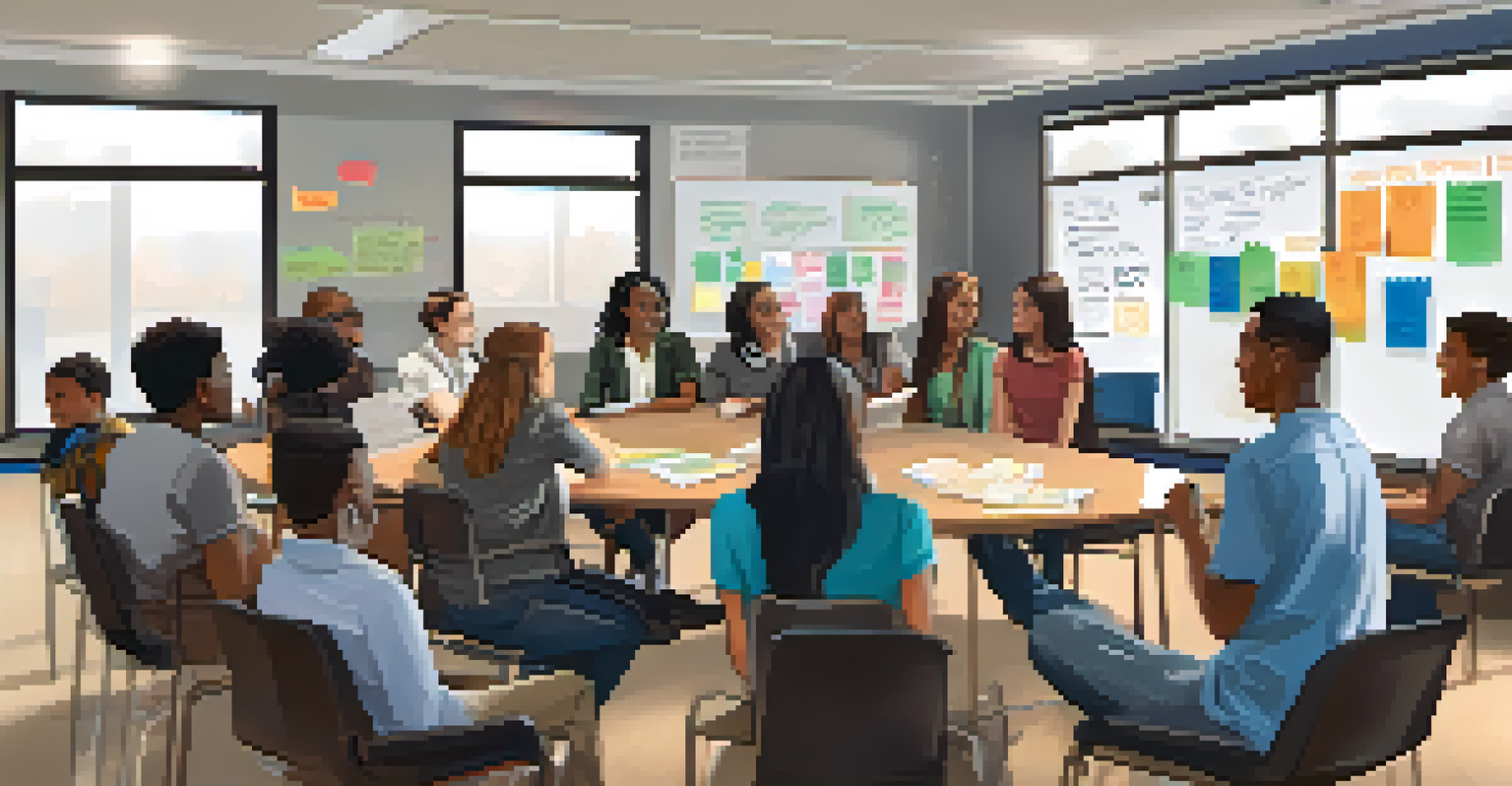Building Community Partnerships for Project-Based Learning

Understanding Project-Based Learning and Its Benefits
Project-Based Learning (PBL) is an educational approach that emphasizes hands-on, real-world projects. Instead of traditional lectures, students engage in in-depth exploration of topics, which fosters critical thinking and problem-solving skills. This method not only enhances academic knowledge but also prepares students for future challenges by developing essential life skills.
Tell me and I forget. Teach me and I remember. Involve me and I learn.
One of the standout benefits of PBL is its ability to connect students with their communities. By working on projects that address local issues, students gain a sense of purpose and belonging. They see firsthand how their efforts can create positive change, making learning more relevant and impactful.
Furthermore, PBL encourages collaboration among students, teachers, and community members. This collaborative spirit nurtures relationships that extend beyond the classroom, creating a network of support and resources. As students engage with diverse perspectives, they learn to appreciate different viewpoints and solutions.
Identifying Potential Community Partners
Finding the right community partners is crucial for successful PBL initiatives. Start by considering local organizations, businesses, and non-profits that align with your project's goals. For instance, if students are interested in environmental issues, partnering with a local conservation group can provide valuable insights and resources.

Don’t hesitate to tap into community networks, such as chambers of commerce or local government offices. These entities often have a wealth of contacts and can help identify potential partners. Additionally, reaching out to schools and universities can foster collaborations that enhance educational outcomes for all involved.
Benefits of Project-Based Learning
Project-Based Learning enhances critical thinking and connects students to their communities through hands-on, real-world projects.
Remember, the best partnerships are built on mutual benefit. Approach potential partners with a clear vision of how collaboration can serve both the community and the students. This mindset not only builds trust but also lays the groundwork for a lasting partnership.
Establishing Clear Goals and Expectations
Once you’ve identified potential partners, it’s essential to set clear goals and expectations for the collaboration. This ensures everyone is on the same page and understands their roles in the project. For example, if a local business is sponsoring a project, clarify what resources they will provide and what you expect in return.
The only way to do great work is to love what you do.
Involving all stakeholders in this planning phase encourages buy-in and commitment. Hold meetings where partners can express their ideas and concerns. This open dialogue fosters a sense of ownership, making partners more likely to invest time and resources into the project.
Having documented agreements can be helpful as well. Consider drafting a memorandum of understanding (MOU) that outlines each partner's contributions, timelines, and goals. This formalizes the partnership and provides a reference point for accountability throughout the project.
Creating Engaging and Relevant Projects
The heart of PBL lies in creating engaging projects that resonate with students and the community. Start by brainstorming project ideas that address real-world issues faced by your community. For instance, students could work on a campaign to raise awareness about recycling, involving local businesses and residents.
Incorporating community input into project design not only enhances relevance but also fosters a sense of collaboration. Invite community members to share their experiences and expertise, which can inspire students and enrich the learning experience. This participatory approach ensures that projects are rooted in the community's needs.
Importance of Community Partnerships
Identifying and collaborating with community partners enriches PBL initiatives by providing resources and fostering mutual benefits.
Moreover, consider integrating technology into projects to expand their reach and impact. For example, students can use social media platforms to promote their initiatives, encouraging broader community involvement. By blending traditional methods with modern tools, projects can achieve greater visibility and engagement.
Implementing and Managing Projects Effectively
Effective project management is key to the success of any PBL initiative. Start with a detailed plan that outlines the project timeline, milestones, and responsibilities. This roadmap provides structure and keeps everyone focused on the end goal.
Regular check-ins with community partners and students help monitor progress and address any challenges that arise. These meetings create opportunities for reflection and adjustment, ensuring the project stays aligned with its objectives. Celebrate milestones along the way to maintain motivation and enthusiasm.
Additionally, be adaptable. Projects often evolve based on feedback and new insights, so being open to change can lead to even better outcomes. Encourage students to share their thoughts and experiences, as their perspectives can lead to innovative solutions and improvements.
Evaluating the Impact of Community Partnerships
After the project concludes, it’s essential to evaluate its impact on students and the community. Gathering feedback from all stakeholders provides valuable insights into what worked well and what could be improved. Consider using surveys, interviews, or focus groups to gather diverse perspectives.
This evaluation phase is not just about assessing outcomes; it's also about celebrating successes. Highlight the achievements of students and partners, showcasing how collaboration led to positive change. Sharing these stories can inspire future partnerships and projects.
Evaluating and Sustaining Projects
Evaluating project impacts and maintaining ongoing relationships with partners are crucial for long-term success in PBL efforts.
Moreover, documenting lessons learned and best practices can serve as a resource for future initiatives. Create a report or presentation that outlines key takeaways, ensuring that the knowledge gained contributes to ongoing improvement in PBL efforts.
Sustaining Community Partnerships for Long-Term Success
Building community partnerships is not just a one-time effort; it’s about cultivating ongoing relationships. After a successful project, take the time to express gratitude to partners for their contributions. A simple thank-you note or follow-up meeting can go a long way in maintaining goodwill.
Consider ways to keep the lines of communication open. Regular updates about students’ progress or future projects can keep partners engaged and invested. Hosting events or workshops can also provide opportunities for partners to connect with students and share their expertise.

Lastly, be proactive in seeking new opportunities for collaboration. As community needs evolve, so too can the focus of your PBL initiatives. By staying attuned to local issues and continuing to engage partners, you can ensure that the benefits of collaboration are felt for years to come.